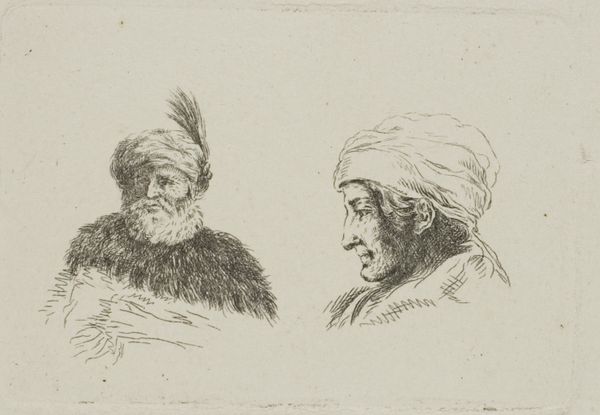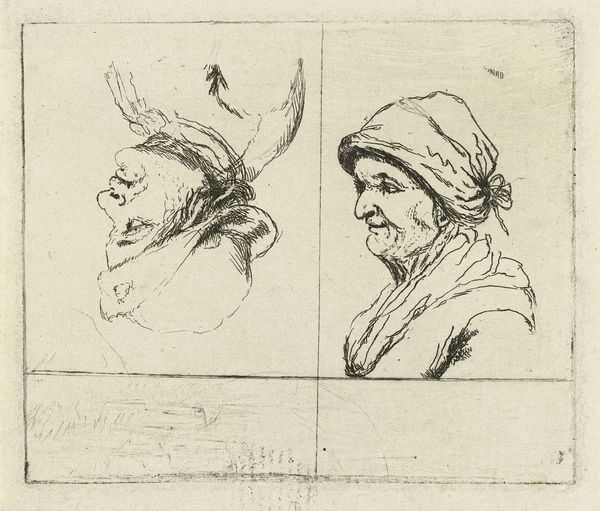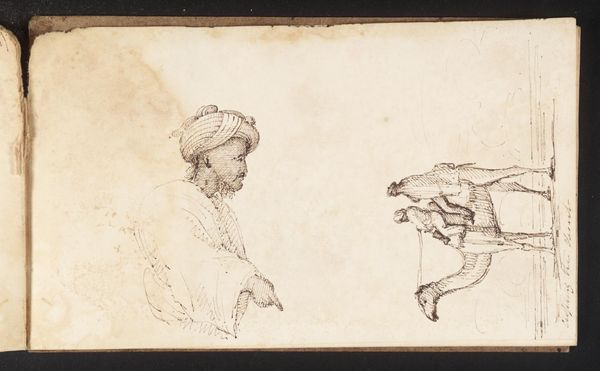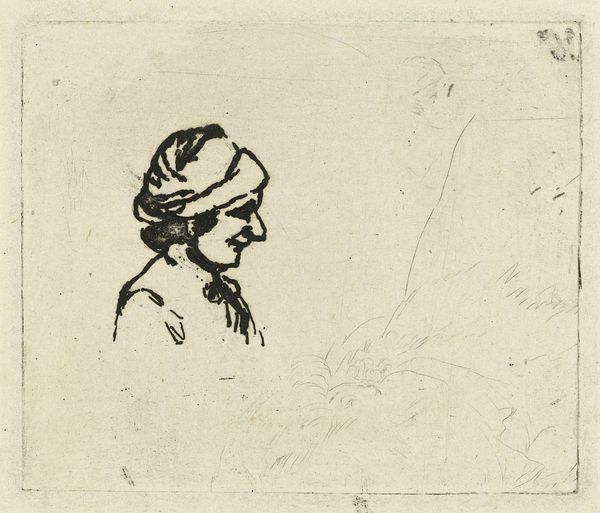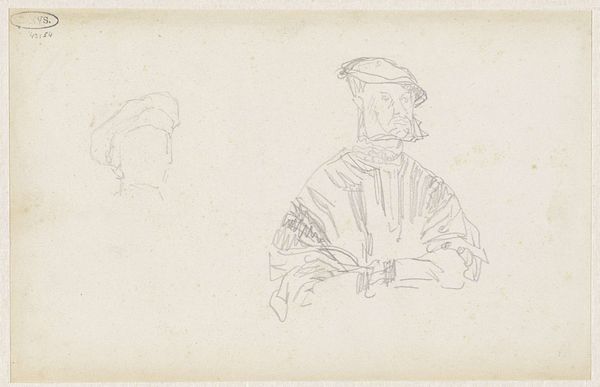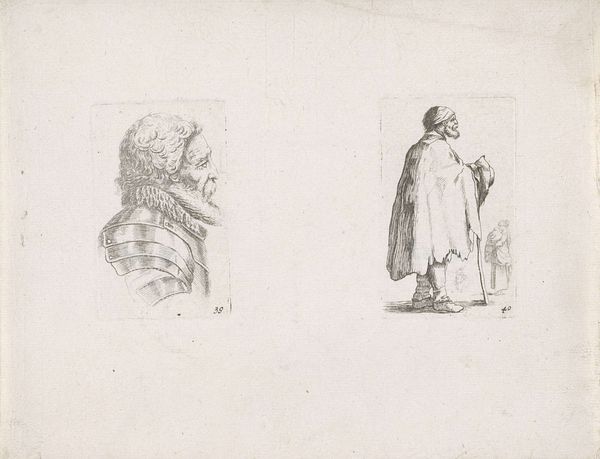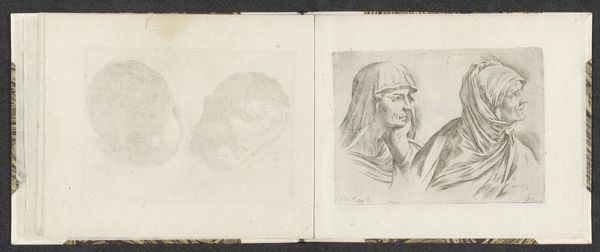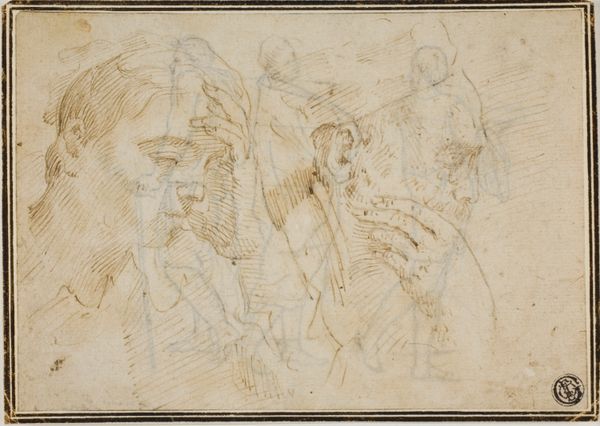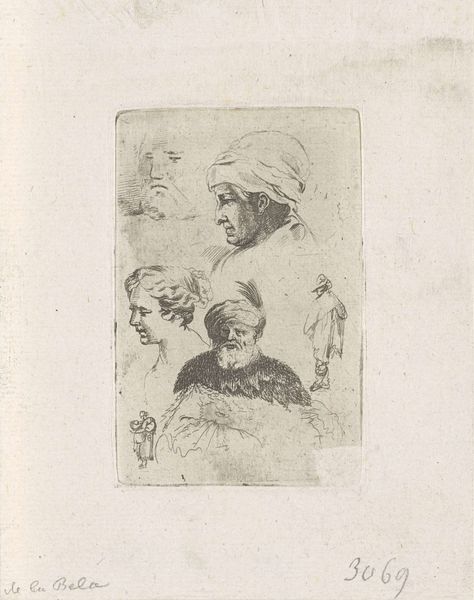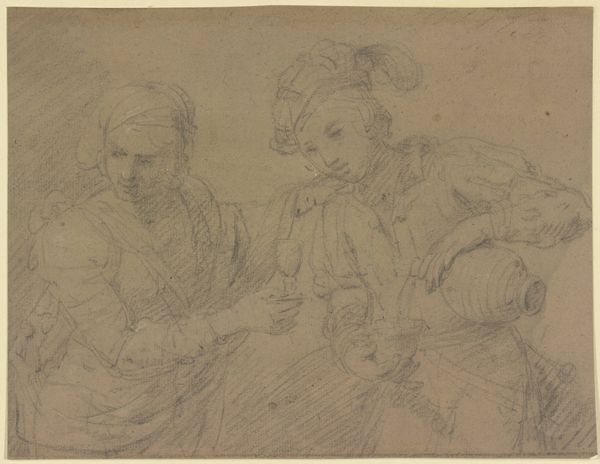
drawing, print, etching, paper, pencil
#
portrait
#
drawing
# print
#
etching
#
pencil sketch
#
paper
#
pencil
Dimensions: 65 × 103 mm
Copyright: Public Domain
Curator: This is Jean-Baptiste de Grateloup’s "Caprice," a drawing and print piece in the collection of the Art Institute of Chicago. The medium includes etching, pencil and paper. Editor: It strikes me as surprisingly intimate. Despite the somewhat formal presentation of these two figures, the sketch-like quality renders it vulnerable and raw. Curator: Indeed. There’s an openness to it that feels almost modern, defying expectations we might have for portraiture from this era. Think about the production here: etching allows for multiplicity, yet the presence of pencil lends the drawing an aspect of singular touch. Consider who could access such representations, who they depict and the implied socio-political discourse between representation, labor, and consumption of image. Editor: Exactly. And what of these sitters? We've got two distinct figures here, both adorned in headwear that suggests different social or regional origins. I wonder about Grateloup's intentions: is he exploring the interplay of diverse identities or is it more of a commentary on exoticism and power structures within colonial contexts? Curator: The tension between perceived realism and idealization is compelling. Look at the one on the right. There is that pronounced beard and feathered turban. The means of production of prints made art available to a broader range of people, altering notions of wealth and taste through accessible forms of visual knowledge. The material itself starts to take on social meaning beyond just what is depicted. Editor: A pencil and etching also invite questions about process. Did he begin with an under-drawing? What informed his decisions regarding the materials at hand, and what influenced his rendering of these particular men? Were they part of a community, or merely a study by the artist. The scale is essential; the smallness asks for our close looking. Curator: Ultimately, artworks like “Caprice” offer us invaluable access to broader societal perspectives regarding representation and cultural expression. This subtle yet complicated work pushes us to ask intricate questions about the intersectionality of production. Editor: A wonderful example of how even a seemingly simple drawing can speak volumes about its era's obsessions and biases. I leave with an intriguing consideration of process, labor, and artistic study in relationship to social issues.
Comments
No comments
Be the first to comment and join the conversation on the ultimate creative platform.
